Ready for Inspection: An Interview with Valentin Groebner
Interview Valentin Groebner Inspection
This interview was first published in Cabinet magazine in 2006.
In spring 2006, National Public Radio reported that over the past few years the agency responsible for issuing passports in Iraq has been flooded by requests from Sunni Muslims who have wanted to change their surnames. The rise in murders and other violent acts committed against Sunnis have apparently encouraged thousands to take on new identities and thus identify themselves in entirely new ways in the Iraqi national register. Since many Sunnis can trace their ancestral names back to the seventh century, some might be less willing than others to sacrifice cultural heritage for the purposes of survival. But the story also speaks poignantly to the shifting relationship between one’s personal identity and one’s passport, which, in the current political climate, has never been more dramatic as aggressive measures to secure borders, register citizens, and limit travel is seen by some as the only solution to achieving global security. Interview Valentin Groebner Inspection
In his book, Who Are You?: Identification, Deception, and Surveillance in Early Modern Europe (Zone Books), Valentin Groebner, professor of history at the University of Lucerne, Switzerland, argues that the emergence of the passport and the creation of bureaus for tracking individuals is far older than most people, and most historians, have previously recognized. Indeed, Groebner demonstrates that the social and political significance of the passport can be traced back hundreds of years to the practice of amassing enormous amounts of data about individuals and building vast agencies to manage and protect them. In arguing for the medieval origins of networks of registration and surveillance, Groebner’s work challenges those who believe that the Kafkaesque tracking of individuals is something inaugurated by the modern era.
David Serlin spoke to Groebner by phone in May 2006. Interview Valentin Groebner Inspection
How did you become interested in the history of the passport, which is not an object that we usually associate with the Middle Ages?
At some point, I realized I had no idea what the history of the passport was, and there were no histories on the subject that went back further than the nineteenth century. My starting point was wondering how, before the age of photography and modern techniques of bureaucratic registration, people described themselves and were described by others who had never seen them. Think of the familiar situation in which you are going to meet someone you don’t know in a crowded area, such as a bus station or an airport. Someone might describe the person’s hairstyle or clothing, while others use film actors as a point of comparison: “He looks a little bit like Woody Allen, only with a big beard.”
I had discovered in previous archival research that, in the past, people often described others by their clothing rather than the categories that we’re familiar with now. Some people disguised themselves simply by putting on a different coat, which is a strange idea to us. But, to my knowledge, there was no mention of eye color before the eighteenth century. Europeans typically described each other using a variety of skin colors, ranging from “yellowish” and “red” to “brown” and “black.” “White” was used as an extreme skin color; echoing literary models from antiquity, medieval and Renaissance writers reserved it for women or for huge, effeminate barbarians from extreme northern regions. Interview Valentin Groebner Inspection
Prior to writing about passports, I had written a book that included a long chapter on the notion of the “invisible enemy,” the enemy who is already within the city walls. They are invisible insofar as you do not know who they are, and the crucial thing is to identify them through the secret sign that marks them as conspirators. So I wanted to figure out when the first “Wanted” posters were put up, the first arrest warrants were issued, when passports were made compulsory, and what role images played in these techniques of identification.
At what point did the creation of passports as compulsory forms of identification become a means of identifying individuals with their country of origin?
Surprisingly, that appears very late. It’s only after the second half of the 1850s that, in Europe, citizens were supposed to carry a passport issued by their home countries. For five hundred years, people were traveling with identity documents issued by any kind of sovereign. Practically all the British travelers to the continent from the seventeenth century onward equipped themselves with passports in Belgium and France because they were so much cheaper to buy there. The very strong nexus between the passport and nationality, the country or place of one’s origin—which is in itself a modern term—is a product of combined developments of the late nineteenth century and the direct result of World War I.
The passport we carry in our pocket is itself a piece of frozen history that goes back much farther in time. It is quite medieval because that is where its categories originated; even the material, such as paper, and the various stamps and seals that make it valid, are medieval in origin. The passport is, in fact, not really an artifact of the individual but an artifact of the issuing authority. I’m interested in the traces that authorities leave on paper rather than authorities’ attempts to fix a person’s allegedly unchangeable identity onto a piece of paper. From the beginning, these documents were about transforming people rather than fixing them, as we usually assume. Interview Valentin Groebner Inspection
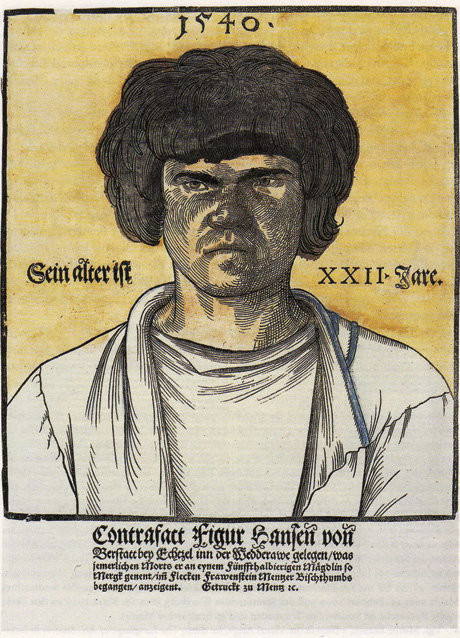
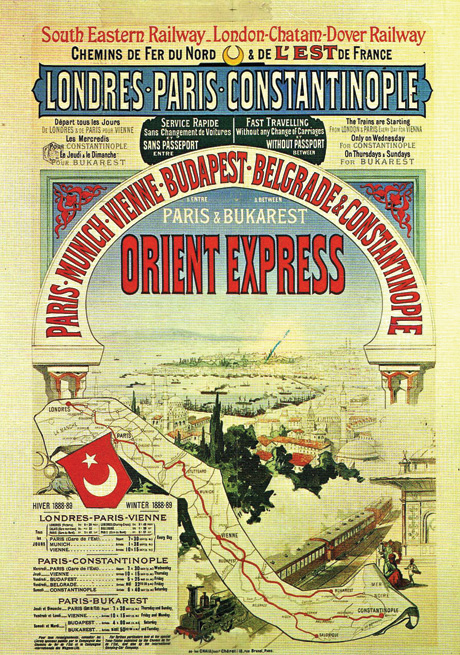
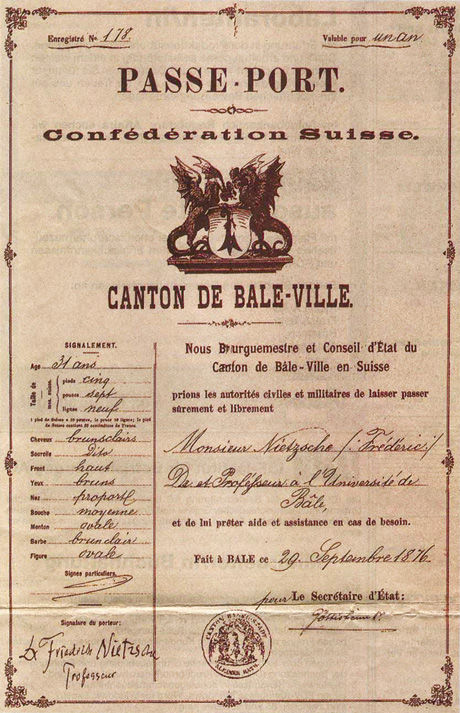
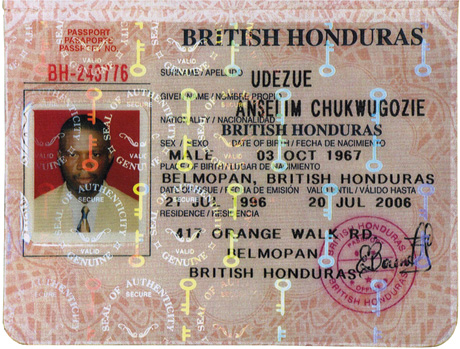
Would you then say that the creation of the “modern” passport takes place in the mid-nineteenth century because of the presumption that borders and territories need to be secured in a world governed by imperial powers?
Yes, but that sense of “national security” has much longer prehistory. Of course, what is so striking is that the idea of securing your borders by registering all travelers and, if possible, all of your own subjects as well, is a fantasy of rule, a bureaucratic fiction. And that fiction is pretty old. It is the result of an adaptation of the Christian belief that God looks up everyone’s deeds in his big book on the day of the final judgment. Authorities throughout Europe, from the sixteenth century onward, tried to establish a huge register in order to control the movements of their subjects, but it never worked out. The first attempts to establish such a system of complete registration, an all-seeing eye of the state, as it were, took place in the later sixteenth century. But it never worked, not even in the powerful Spanish Habsburg empire. It just produced huge mountains of paper, which you can visit today in archives in Spain and Italy. Interview Valentin Groebner Inspection
By focusing on the material stuff out of which identity is made—that is, the seal, the paper, and the signature—it is obvious that the physical components that make a document valid are products of reproduction technology. The king’s seal, or the city’s stamp, is valid because it is the same on every document.
That’s what gives it its authority.
Exactly. It’s not the name on my passport that makes the document valid, but the categories of authentication created through formal bureaucratic procedures that the document must bear, that make it truly valid. It was clear from the very beginning that the state’s ability to produce an authentic document lies in its application of signs of authenticity to a document. Then, every technically able person was tempted to copy the reproductive signs and use them for their own purposes. That’s why forged passports appeared only a few years after passports were made compulsory.
But long before the official passport, in the second half of the sixteenth century, a new figure appeared on the scene in Europe: the impostor, someone who has accumulated many impressive, personal, official documents to show that he is a rich merchant or Count So-and-So, except that all of these impressive documents are forged. The practices of forged identification always mirror those of the official normative documents that are introduced in order to survey, control, and register people on the move. What is so fascinating is that everyone knows what these official documents are supposed to look like.
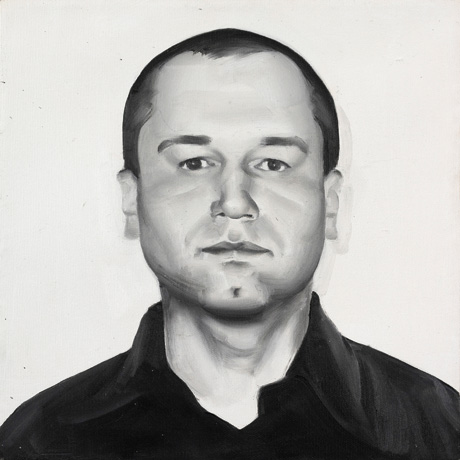

In 2004, Polish artist Rafal Bujnowski painted a portrait of himself and submitted a photograph of the painting in lieu of the usual black-and-white photograph required for applications for US visas. The staff at the US embassy was fooled and granted him a visa featuring his painted likeness, which he promptly used to enter the US where he took flying lessons over New York City airspace.
These seem to be instances in which people did not create counterfeits based on a real person but instead created identity documents for someone who didn’t exist, as opposed to what we might in the contemporary moment call “identity theft.”
Yes, I suppose that’s true. The case of the impostor as someone who “takes the place of another person,” which is the literal meaning of the word, was relatively rare in Renaissance Europe. There were a few famous medieval cases; several people who, after the death of Emperor Fredrick II, for example, appeared as the wonderfully returned emperor. More often than not, though, people invented brand-new identities for themselves with the help of seals and impressive identity documents. A number of these impostors had impressive political careers. For example, there was a Jewish merchant named David Reuveni, who appeared first in Venice in 1524 and then in Rome claiming to be the brother-in-law of a powerful Jewish king in the East. Reuveni claimed that this king would be able and willing to attack the Ottoman Empire from the east if only he had a bit of cash. They were close to equipping him with a great deal of money and artillery to subsidize this fictional ally against the Turks in the East. Reuveni very nearly made it, but he was busted and disappeared in the prisons after the Holy Inquisition.
In practice, the huge registers built up from the sixteenth century onward did not serve as a real means to identify people. Premodern identification procedures relied on much more efficient means: informers, secret individuals who were good at finding people through informal techniques. It’s like that character in Quentin Tarantino’s film Jackie Brown who, when asked, “How did you find him?” replies simply, “It’s my job to find people.” These people have existed for a very long time. We have good information on these informers. Some worked part-time, others were fully employed by ruling princes or councils in many medieval cities, including Venice, which was infamous for its official spies and plainclothes informers. In addition, Florence had an entire system of official “post-boxes” installed specifically for informal notes on the secret denunciation of other citizens. People were invited to drop information on others into these boxes. This was an officially accepted practice.
It sounds like the Stasi in East Germany.
Well, in the fifteenth century, neither Florence nor Venice was a particularly fun place to live. But the system was not so much one of registering people through written information. The much more efficient way was through denunciation, through secret official informers who kept an eye on people and helped to build an atmosphere in which you were never sure for whom the person at the next table, listening to your conversation, was working. That type of insecurity is a classic feature of the premodern rule.
I suppose we are not that terribly modern in our ways of controlling the population. I can’t help but feel that though we fear the all-seeing eye of the state upon us, be it through closed-circuit cameras, telephone calls, email exchanges, or through our genetic fingerprints, the techniques of surveillance have not greatly changed. Interview Valentin Groebner Inspection
One of the most efficient techniques of control is creating an atmosphere in which you can never be sure if your official documents are valid or not. The very logic of compulsory registration is that you bring the person that is being controlled into a state of temporary insecurity in which he or she does not know the categories under which his or her passport or ID card is scrutinized. I have the feeling that the introduction of new passports and new devices of identification is creating situations of control in which you never can be sure if your passport is still valid, if your chip is OK, or if someone has tampered with your magnetic strip. You cannot ever be sure if your papers are good enough. Citizens of wealthy nations aren’t accustomed to this because they safely assume that their traveling documents are first class. But anyone who carries a Mexican or Nigerian passport can probably tell a different story.
In what ways have the formal categories used in identification documents to describe people changed over the past few hundred years?
The use of distinguishing signs or marks in physical descriptions is very old, but it is still used in a lot of European passports. It clearly goes back to recording the scars and tattoos with which people were marked in order to be distinguishable. Our own skin is a piece of selective memory. What was registered as a distinguishing mark is in itself an interesting problem? Any analysis of the categories used to describe people in the past necessarily brings forward how mobile and flexible these categories were. Should freckles, for example, be considered distinguishing marks?
I’m sorry to say that, from a historical point of view, the new field of biometrics—the gathering of behavioral or physiological data about an individual—may well follow the way of its forerunners. It will be doomed because it will pile up so much information about the actual encoding, registering, and collecting apparatuses that the biometric data itself will become secondary. The process of collecting and ordering huge masses of data is more energy-consuming than those who build the registration apparatuses realize. The accumulation of biometric data will fall victim to the same entropy as the huge piles of paperwork in the archives of King Philip of Spain who, at the end of the sixteenth century, wanted positively to establish the identities of everyone emigrating to the New World in order to prevent the offspring of Jews, Arabs, convicted heretics, runaway priests, and debtors from wandering across the Atlantic to start a new life. But that is what they did. All data run the risk of turning into a bureaucratic fantasy in which the already stored information is used to provide the categories of authenticity for new information.
Bureaucracies also need to collect data in order to justify their existence.
Yes. And in order to justify the validity of the data they have already collected. That is what happened in poor King Philip’s archive; all those who left for the New World had applied with false documents. At some point, a scribe in the Spanish court realized that they had tens of thousands of personal files, but the documents within these files had been forged. I’m not saying that all the biometric data will end up as forgery, but instead that there has been a tendency for huge collections of data to form into quasi-autonomous fantasies of a world in which everything registered is institutional.
So would you argue that the relationship between official identification and one’s personal identity is something that well predates the modern era?
Well, to be honest, the word identity gives me a headache. As a term, it’s rather problematic since it has at least three profoundly different uses or meanings. Identitas, a medieval word, refers to the Holy Trinity and to a very complicated theological debate about the sameness of very different principles within the trinity. Identity stands, simultaneously, for my own definition of myself in the first person—” I am X,” as it were. But it is also used to label and denominate someone else—” You are X,” which is quite a different meaning. Lastly, identity is used to describe a person’s adherence to a group, a collective. These three distinct meanings magically blend into one when we use the term indiscriminately. It’s a noun trick. So from the very beginning, the term identitas already referred to reproduction, to doubling, to the proliferation of something within different media. It does not refer to an individualistic or essential principle but, rather, to the contrary. The more polemical passages in my book are about insisting that we replace the concept of identity with the process of identification, which involves multiple protagonists. Identity itself has no protagonists; it is something that can be conjured up from the ground. It is more a kind of cloud than a notion one can work with.
I must confess that, despite being a historian who works in the fifteenth and sixteenth centuries, the way I look at my material is always informed by the world I’m living in. We like to pretend that premodern peoples were simple individuals with simple identities who did not have to grapple with any of the problems that we attribute to modernity. But we have an obligation to treat the material we find in the archives in an intellectually responsible manner and not separate it from the sharp edges of modernity or a premodern lost world.
By looking at these complex forms of identification, it seems as if what you’re trying to do in your book is challenge the fantasy that premodern peoples were somehow more “authentic” than those in the Renaissance and modern eras.
What I focus on is the degree to which people were able to imagine their own transformation, because identity papers are something that transforms us. When we are described and registered, we are also being transformed, and not just metaphorically speaking. Physical descriptions of people who have been conscripted for military service, or who were captured and sold as slaves, constitute some of the oldest registers we have. These people are transformed by being identified and described, in the most material sense of the word.
Since I was trained as an art historian and had learned about the “discovery” of subjectivity in Renaissance Italy, it was a revelation to discover that medieval people didn’t believe that a portrait looked exactly like the person it was rendering. The portrait was always already understood as a mask, something artfully fabricated that might only have represented the secret, inner aura of the individual depicted in the portrait. So the fantasy of primordial authenticity and identity in the happy premodern world is simply of no analytical value whatsoever. It might be appealing, but it doesn’t help us explain anything. Interview Valentin Groebner Inspection
To what extent was your interest in the processes of identification for medieval and Renaissance peoples shaped by living in a post-9/11 world?
Well, the current political climate certainly has influenced the way I’ve thought about identification, but I wrote the first sketch of this book in the late summer of 1999. In January 2001, I conducted a long interview in the headquarters of the Swiss federal police with a group of specialists responsible for designing the then-new, forgery-proof Swiss passport. The specialists explained to me that they were ready for the first time to include a chip integrated with the passport holder’s biometric data. After September 11, all of the research on biometric data, which had been initiated by credit card companies, became justified by the new terrorist threat. But all the technology was there beforehand.
When I asked why this was necessary, they explained it with the story of a woman from Kenya who was going to marry a Swiss man. She traveled from Mombasa to Zurich in order to get a new, authentic, original Swiss passport. After she received the passport, she put it in an envelope and sent it to her sister in Mombasa, who was roughly the same height and age as the woman. The sister then would be able to enter Switzerland unhindered because her passport would be considered authentic and valid. The Swiss police called this an example of the impostor problem and the reason why they wanted all passports to carry biometric data. Interview Valentin Groebner Inspection
It is telling that the threatening image of the invisible outsider is used to justify allegedly powerful devices for registering and controlling all citizens in order to sort out good ones from the bad. These are stories that sound familiar because we have heard them for nearly five hundred years. Of course, this is a European perspective because we have had stricter obligations to be registered by the state and carry passports and identity cards for the last hundred years. But understood within the context of the history of the passport, the biometric model is merely a new version of the centuries-old gap between the person and the document that has to re-present, re-produce, and re-naturalize the citizen. Our submission to the unknown workings of bureaucracy is a very old principle, but it is the principle under which passports and identification procedures have operated since the sixteenth and seventeenth centuries.
Valentin Groebner has written on images of extreme violence (Defaced: The Visual Culture of Violence in the Middle Ages, Zone Books, 2005), and on gifts and corruption (Liquids Assets, Dangerous Gifts, University of Pennsylvania Press, 2002). He teaches medieval and Renaissance history at the University of Lucerne, Switzerland, and is currently working on the commodification of human bodies and body parts in Renaissance Europe and in the twenty-first century.
David Serlin is an associate professor of communication and science studies at the University of California, San Diego, and an editor-at-large for Cabinet. He is the author of Replaceable You: Engineering the Body in Postwar America (University of Chicago Press, 2004). Interview Valentin Groebner Inspection
© 2006 Cabinet Magazine
Interview Valentin Groebner
FAQ Passport History
Passport collection, passport renewal, old passports for sale, vintage passport, emergency passport renewal, same day passport, passport application, pasaporte passeport паспорт 护照 パスポート جواز سفر पासपोर्ट
1. What are the earliest known examples of passports, and how have they evolved?
The word "passport" came up only in the mid 15th Century. Before that, such documents were safe conducts, recommendations or protection letters. On a practical aspect, the earliest passport I have seen was from the mid 16th Century. Read more...
2. Are there any notable historical figures or personalities whose passports are highly sought after by collectors?
Every collector is doing well to define his collection focus, and yes, there are collectors looking for Celebrity passports and travel documents of historical figures like Winston Churchill, Brothers Grimm, Johann Wolfgang von Goethe. Read more...
3. How did passport designs and security features change throughout different periods in history, and what impact did these changes have on forgery prevention?
"Passports" before the 18th Century had a pure functional character. Security features were, in the best case, a watermark and a wax seal. Forgery, back then, was not an issue like it is nowadays. Only from the 1980s on, security features became a thing. A state-of-the-art passport nowadays has dozens of security features - visible and invisible. Some are known only by the security document printer itself. Read more...
4. What are some of the rarest and most valuable historical passports that have ever been sold or auctioned?
Lou Gehrig, Victor Tsoi, Marilyn Monroe, James Joyce, and Albert Einstein when it comes to the most expensive ones. Read more...
5. How do diplomatic passports differ from regular passports, and what makes them significant to collectors?
Such documents were often held by officials in high ranks, like ambassadors, consuls or special envoys. Furthermore, these travel documents are often frequently traveled. Hence, they hold a tapestry of stamps or visas. Partly from unusual places.
6. Can you provide insights into the stories behind specific historical passports that offer unique insights into past travel and migration trends?
A passport tells the story of its bearer and these stories can be everything - surprising, sad, vivid. Isabella Bird and her travels (1831-1904) or Mary Kingsley, a fearless Lady explorer.
7. What role did passports play during significant historical events, such as wartime travel restrictions or international treaties?
During war, a passport could have been a matter of life or death. Especially, when we are looking into WWII and the Holocaust. And yes, during that time, passports and similar documents were often forged to escape and save lives. Example...
8. How has the emergence of digital passports and biometric identification impacted the world of passport collecting?
Current modern passports having now often a sparkling, flashy design. This has mainly two reasons. 1. Improved security and 2. Displaying a countries' heritage, icons, and important figures or achievements. I can fully understand that those modern documents are wanted, especially by younger collectors.
9. Are there any specialized collections of passports, such as those from a specific country, era, or distinguished individuals?
Yes, the University of Western Sidney Library has e.g. a passport collection of the former prime minister Hon Edward Gough Whitlam and his wife Margaret. They are all diplomatic passports and I had the pleasure to apprise them. I hold e.g. a collection of almost all types of the German Empire passports (only 2 types are still missing). Also, my East German passport collection is quite extensive with pretty rare passport types.
10. Where can passport collectors find reliable resources and reputable sellers to expand their collection and learn more about passport history?
A good start is eBay, Delcampe, flea markets, garage or estate sales. The more significant travel documents you probably find at the classic auction houses. Sometimes I also offer documents from my archive/collection. See offers... As you are already here, you surely found a great source on the topic 😉
Other great sources are: Scottish Passports, The Nansen passport, The secret lives of diplomatic couriers
11. Is vintage passport collecting legal? What are the regulations and considerations collectors should know when acquiring historical passports?
First, it's important to stress that each country has its own laws when it comes to passports. Collecting old vintage passports for historical or educational reasons is safe and legal, or at least tolerated. More details on the legal aspects are here...
Does this article spark your curiosity about passport collecting and the history of passports? With this valuable information, you have a good basis to start your own passport collection.
Question? Contact me...

